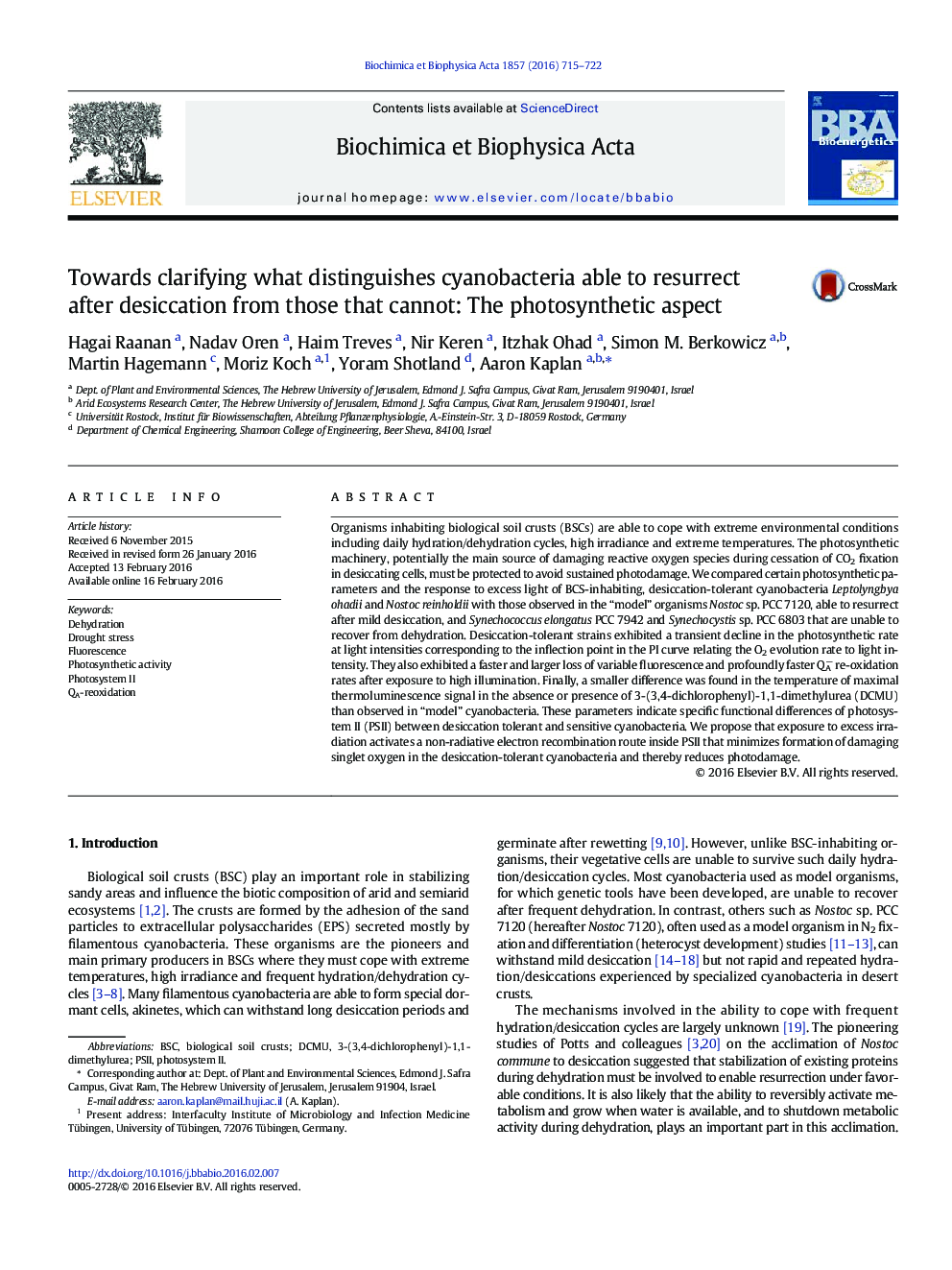| کد مقاله | کد نشریه | سال انتشار | مقاله انگلیسی | نسخه تمام متن |
|---|---|---|---|---|
| 1941925 | 1052560 | 2016 | 8 صفحه PDF | دانلود رایگان |
• Excess light energy may damage the photosynthetic machinery.
• Desiccation-tolerant cyanobacteria activate quenching mechanisms that protect them during dehydration.
• Our data suggests that the quenching site is within photosystem II.
Organisms inhabiting biological soil crusts (BSCs) are able to cope with extreme environmental conditions including daily hydration/dehydration cycles, high irradiance and extreme temperatures. The photosynthetic machinery, potentially the main source of damaging reactive oxygen species during cessation of CO2 fixation in desiccating cells, must be protected to avoid sustained photodamage. We compared certain photosynthetic parameters and the response to excess light of BCS-inhabiting, desiccation-tolerant cyanobacteria Leptolyngbya ohadii and Nostoc reinholdii with those observed in the “model” organisms Nostoc sp. PCC 7120, able to resurrect after mild desiccation, and Synechococcus elongatus PCC 7942 and Synechocystis sp. PCC 6803 that are unable to recover from dehydration. Desiccation-tolerant strains exhibited a transient decline in the photosynthetic rate at light intensities corresponding to the inflection point in the PI curve relating the O2 evolution rate to light intensity. They also exhibited a faster and larger loss of variable fluorescence and profoundly faster QA− re-oxidation rates after exposure to high illumination. Finally, a smaller difference was found in the temperature of maximal thermoluminescence signal in the absence or presence of 3-(3,4-dichlorophenyl)-1,1-dimethylurea (DCMU) than observed in “model” cyanobacteria. These parameters indicate specific functional differences of photosystem II (PSII) between desiccation tolerant and sensitive cyanobacteria. We propose that exposure to excess irradiation activates a non-radiative electron recombination route inside PSII that minimizes formation of damaging singlet oxygen in the desiccation-tolerant cyanobacteria and thereby reduces photodamage.
Journal: Biochimica et Biophysica Acta (BBA) - Bioenergetics - Volume 1857, Issue 6, June 2016, Pages 715–722
